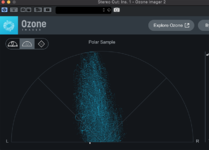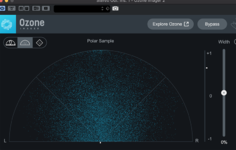So I’m finishing up the mix of a song I’ve been playing acoustically for years (actually, I should just put it down and walk away because at this point I can only jack it up) and it got me curious. I tracked the acoustic with a m/s configuration. I did this because I wanted it to anchor the chord but I also wanted to leave the center open for the vocal as well as kick, bass, and snare. I wanted it to fill both sides so mono was out. I could have doubled it but my thought was that if it collapsed to mono, I would want it to sit back and allow the lead instruments to, well, take the lead. I also didn’t want to pan too wide because I wanted to reinforce it with two separate instruments panned to the outside.
I’m also tracking another song I usually perform solo that has a ragtime style guitar part. For this one, I chose to track in mono. My reasoning is that I wanted that ragtime feel prominent in the mix and stereo or doubled would feel disjointed, to me.
Anyway, this all got me curious about how y’all might approach these decisions and your logic or reasoning behind what you do. I guess if I was adding an acoustic sound to pump up a chorus (electric too, for that matter) I would probably double track. I’m interested to hear y’all’s take.
I’m also tracking another song I usually perform solo that has a ragtime style guitar part. For this one, I chose to track in mono. My reasoning is that I wanted that ragtime feel prominent in the mix and stereo or doubled would feel disjointed, to me.
Anyway, this all got me curious about how y’all might approach these decisions and your logic or reasoning behind what you do. I guess if I was adding an acoustic sound to pump up a chorus (electric too, for that matter) I would probably double track. I’m interested to hear y’all’s take.



